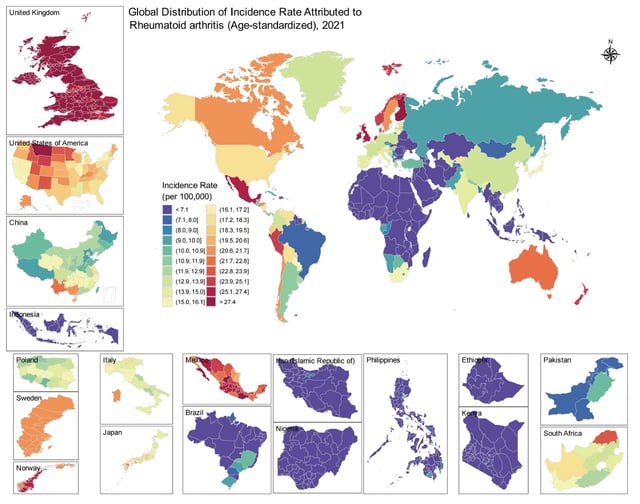Overview
- The study applied a novel transformer-based deep learning framework to GBD data from 953 global and local locations spanning 1980–2021 to map incidence, prevalence, mortality and DALYs
- High and high-middle SDI countries shoulder a disproportionate share of the burden, with DALY-related inequality surging 62.6% from 1990 to 2021 and the widest gaps in Finland, Ireland and New Zealand
- Subnational hotspots emerged in 2021, with West Berkshire in the UK showing the highest incidence rate and Zacatecas in Mexico recording the highest DALY rate
- Forecasts to 2040 predict continued increases in low-middle SDI regions driven by aging and population growth, while high SDI areas may see modest DALY declines if early-diagnosis and treatment access are sustained
- Policy simulations indicate that effective tobacco control could cut rheumatoid arthritis deaths by 16.8% and DALYs by 20.6% in regions with high smoking prevalence
